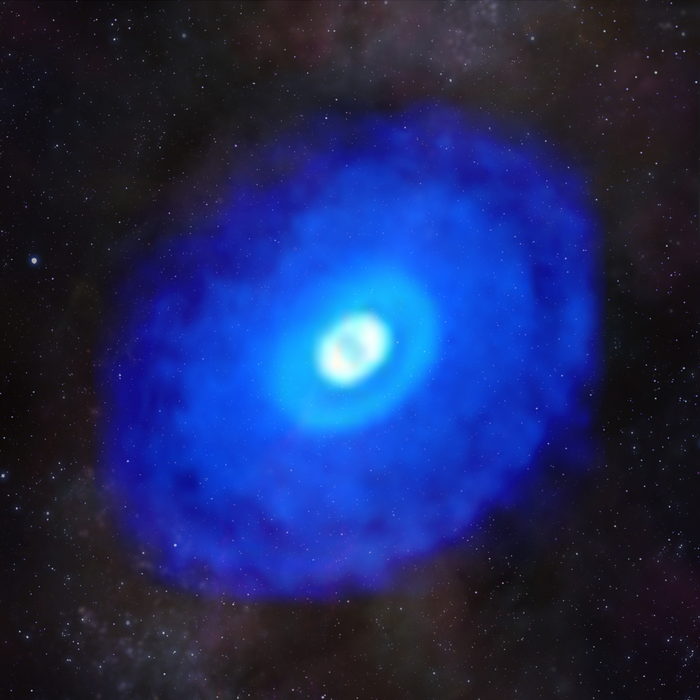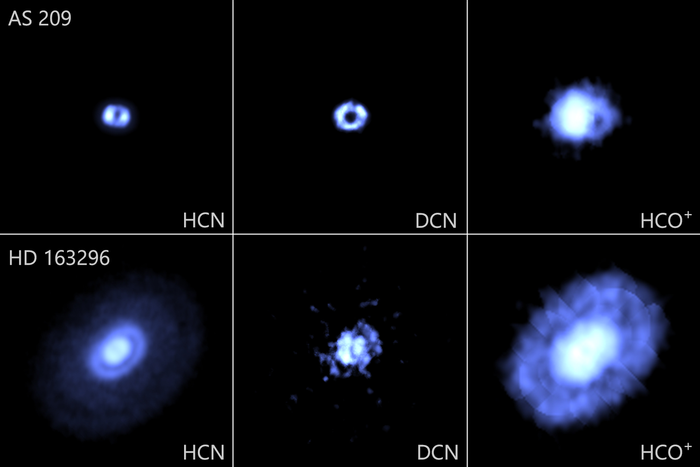Scientists chip away at secrets of planet formation, origin of life in bevy of new research

A whopping 20 new scientific papers use data gathered by a host of radio dishes perched high in the Chilean desert to tease apart the mysteries of how planets form.
The Atacama Large Millimeter/submillimeter Array (ALMA) specializes in studying what scientists call protoplanetary disks, the mess of material that surrounds young stars and eventually gloms together to build planets. While scientists do plenty of work analyzing already-formed exoplanets, studying protoplanetary disks as well offers an opportunity to see all those ingredients mixed up and spread out.
A new set of 20 papers published in The Astrophysical Journal Supplement Series shares results from a research program called Molecules with ALMA at Planet-forming Scales (MAPS), which uses the powerful facility to study protoplanetary disks.
Related: Meet ALMA: Amazing photos from giant radio telescope
One of the new papers maps the presence of more than a dozen organic molecules throughout five different protoplanetary disks. Organic molecules, which contain carbon, are of particular interest to scientists trying to understand how life begins.
"These planet-forming disks are teeming with organic molecules, some which are implicated in the origins of life here on Earth," Karin Öberg, an astronomer at the Center for Astrophysics at Harvard & Smithsonian (CfA) and principal investigator for MAPS, said in a statement. "This is really exciting; the chemicals in each disk will ultimately affect the type of planets that form — and determine whether or not the planets can host life."
The maps don't only show that organic compounds exist in protoplanetary disks, they show that the distribution of such ingredients varies. So, two planets forming in different regions of the same protoplanetary disk could end up with vastly different supplies of these compounds.
Breaking space news, the latest updates on rocket launches, skywatching events and more!

"Our maps reveal it matters a great deal where in a disk a planet forms," Öberg said. "Two planets can form around the same star and have very different organic inventories, and therefore predispositions to life."
In addition to locating different ingredients, the research also identified compounds built with deuterium, which is a form of hydrogen twice as heavy as the most commonly found flavor of that element. Deuterium levels vary across a disk, the research suggested, with much less of the atom found closer to the star at the heart of the disk.
Scientists working on the research suite were also able to detect the very earliest signs of a planet coalescing out of a disk. That's usually very difficult — the same dust and debris that forms the disk itself also blocks the tiny baby stages of planets.
"It's like trying to see a fish underwater," Richard Teague, an astronomer also at CfA and lead of a segment of the MAPS project, said in the same statement. "We know they're there, but we can't peer that far down. We have to look for subtle signs on the surface of the water, like ripples and waves."

Another segment of the MAPS research focused on the precursors of massive Jupiter-like planets, in which elements like carbon and oxygen seemed to be much rarer than compounds like methane.
"Our findings suggest that many gas giants may form with extremely oxygen-poor (carbon-rich) atmospheres, challenging current expectations of planet compositions," Arthur Bosman, an astronomer at the University of Michigan and lead author of one of the papers, said in a different statement.
Overall, the research shows that there's plenty more to learn about what surrounds young stars, how planets form and what that means for the universe and life's prospects in it.
"We're hoping to use ALMA to search for the next stepping stones of chemical complexity in these disks," John Ilee, an astronomer at the University of Leeds in the U.K. and lead researcher on a new MAPS study, said in another statement. "If we detect them, then we'll be even closer to understanding how the raw ingredients of life can be assembled around other stars."
Email Meghan Bartels at mbartels@space.com or follow her on Twitter @meghanbartels. Follow us on Twitter @Spacedotcom and on Facebook.

Meghan is a senior writer at Space.com and has more than five years' experience as a science journalist based in New York City. She joined Space.com in July 2018, with previous writing published in outlets including Newsweek and Audubon. Meghan earned an MA in science journalism from New York University and a BA in classics from Georgetown University, and in her free time she enjoys reading and visiting museums. Follow her on Twitter at @meghanbartels.
